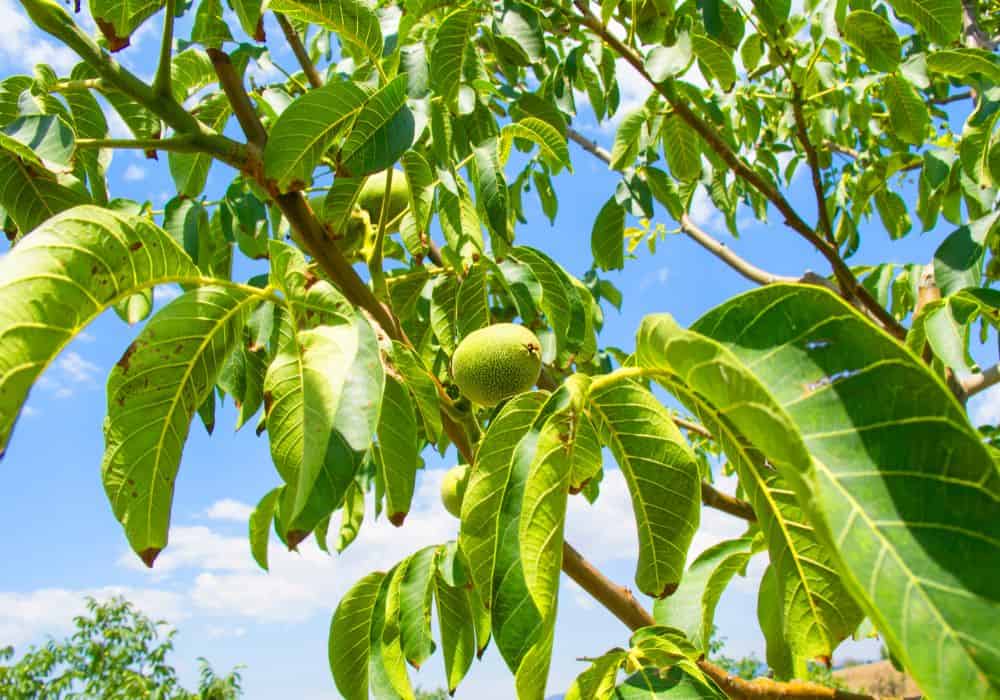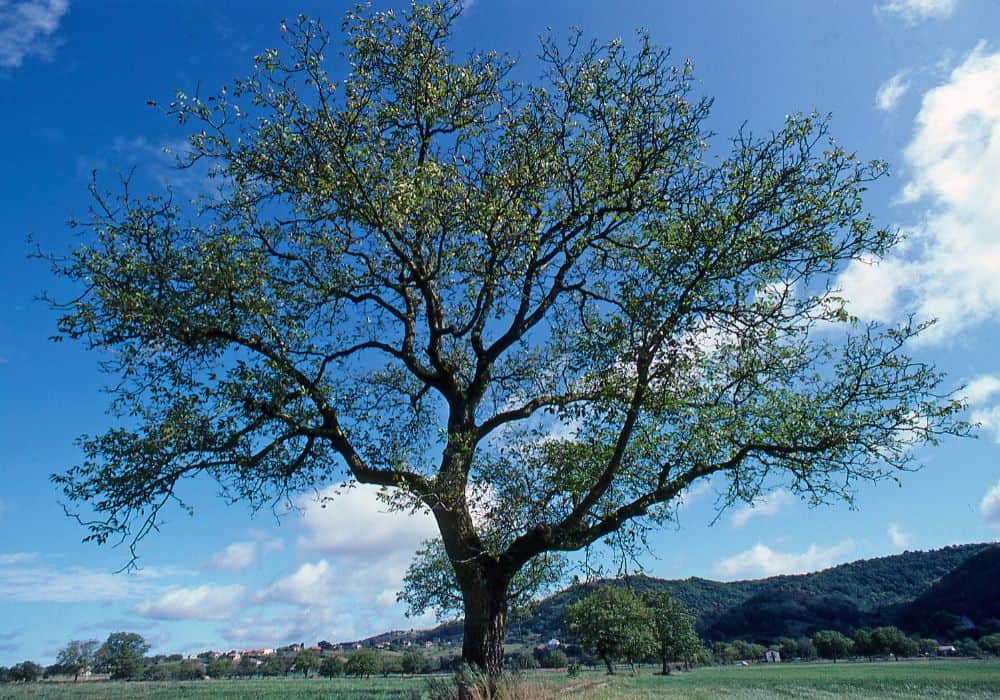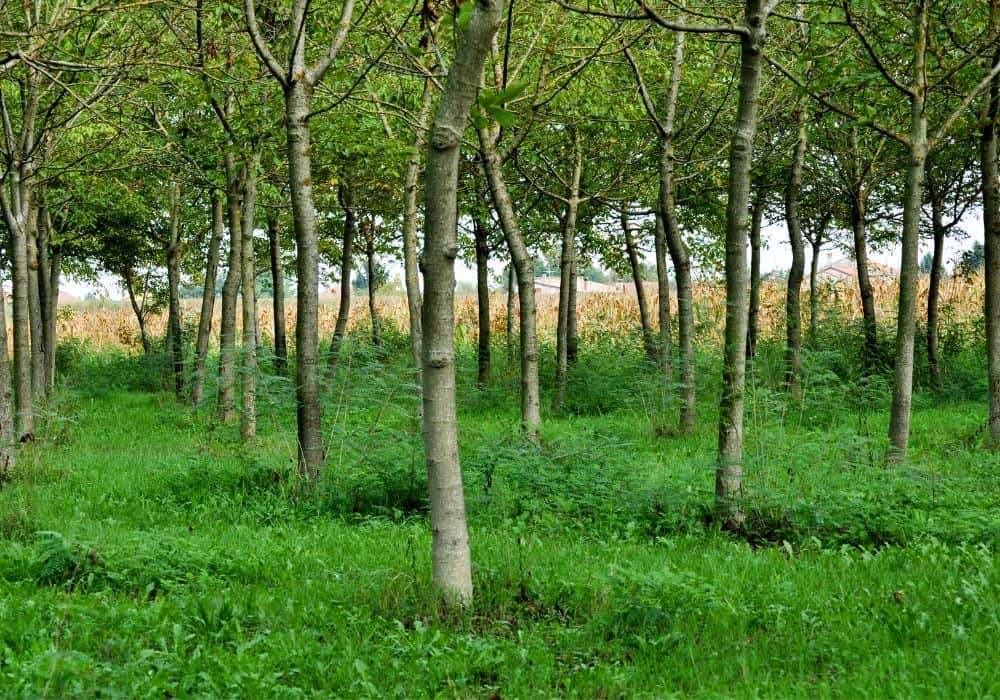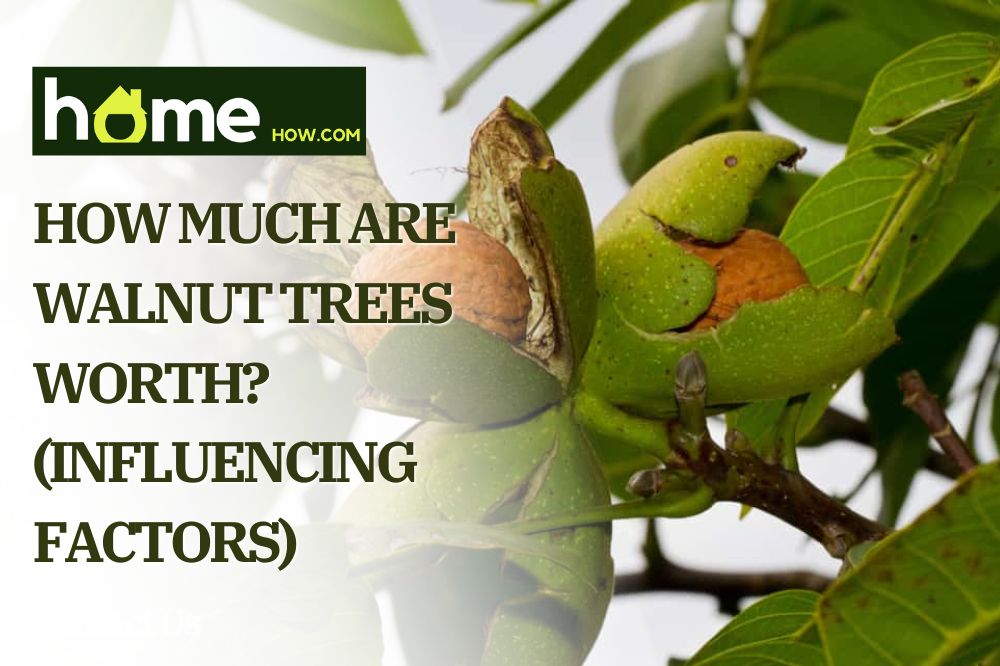Walnut trees are big, beautiful trees usually found in the central and eastern parts of the United States.
In addition to being pleasant to look at, these trees can also be worth a good bit of money.
Whether you are looking to grow and sell walnut trees or already have acres of them, we’re here to answer your question: How much are walnut trees worth?
How Much Are Walnut Trees Worth?
Most walnut trees will sell for a hefty price and can be a very lucrative business if you are willing to wait for them to mature or if you have already purchased land with a walnut tree orchard.
One thing to consider when evaluating your walnut trees worth is supply and demand. When walnut trees are in demand, the price is relatively higher than when the demand is low.
The demand for walnut trees is currently very high, so the price is around $5-$10 for each board foot, if not more.
If you are looking to make a living from walnut trees, one of the most valuable trees is the black walnut tree.
American Black walnut trees (Juglans Nigra) are sought after for their delicious nuts, packed in antioxidants and other healthy compounds, and their gorgeous timber.
Black walnut wood is also a popular choice for making many different things, such as cabinets, doors, furniture, fences, and flooring.
It is incredibly strong while remaining lightweight making it great for dressers and tv stands that get moved around often.
The black walnut tree’s worth is significantly higher because it is so popular, and they are often sold at premium prices.
What Factors Affect The Price Of A Walnut Tree?

Whether you already have an orchard forest full of walnut trees or you are looking to get into the business, there are other factors other than the demand that influence the value of the tree.
Here are the main things to look at when it comes to determining the tree’s value.
1. The size
The size of a walnut tree can impact its worth and market value. In general, larger trees are more valuable than smaller ones. Mature Trees that are wider and taller are usually worth more than shorter, skinnier trees because they can produce more boards. But the size of a tree remains one of the most important factors when determining its value and earning potential.
The diameter of the tree’s trunk is the main contributing factor to how much it is worth. A mature walnut tree with a trunk diameter of 20″ will run for around $800, while a 40″ to 50″ tree would be worth up to $2000 at auction.
So if you’re looking for an investment opportunity or simply want to get the most bang for your buck when selling your landscaping asset, be sure to take size into account!
2. The veneer quality
Walnut trees are prized for the rich flavor of their nuts and the distinctive, dark color of their wood. But the value of walnut trees depends on the quality of their veneer.
The veneer is assessed by taking a very thin slice of wood from the timber and examining it for blemishes and defects, such as cracks, bumps, peck marks, and knots.
A higher-graded veneer will be worth considerably more than lower graded veneer. Ultimately, when it comes to the valuation of a walnut tree, the quality of its veneer is just as important as its other features.
3. The color of the wood
When it comes to harvesting walnut trees, many people are interested in the quality and color of the wood.
In general, darker trees that grow deeper in the woods tend to have a higher value, as this indicates that they have had less exposure to sunlight.
Over time, this leads to a denser texture and richer color. These qualities can make walnut wood particularly valuable for furniture and other high-end pieces of furniture.
How Is A Walnut Tree Graded?

Walnut trees are graded by a professional consulting forester, and they measure at the lowest 16′ of the tree.
The expert grades the veneer based on a clear wood rating, with Grade A veneer being the highest and Grade 2 being the lowest. Here is how the trees are graded.
- Grade A tree is completely free from blemishes, with no knots or damage.
- Grade B tree has minor damage with little blemishes.
- Grade C tree has small knots on one or both sides of the tree.
- Grade D trees have multiple knots
- Grade 1 tree has knots covering the tree.
- Grade 2 trees have big knots and a lot of damage
Other Factors To Take Into Account
There are a number of factors that can determine the value of your walnut trees.
The location of a processing facility is one important consideration, as this may affect the cost of transporting your lumber.
Another key consideration is the condition of your land, especially if you grow walnut trees on rocky or uneven terrain.
And finally, regulations regarding harvesting and selling trees are also important to keep in mind.
Are Walnut Trees Poisonous?
While walnut trees are not poisonous to humans, they produce a chemical called juglone, which could cause damage to nearby plants. Most walnut trees don’t produce enough chemicals to affect plants grown around them.
However, you should take caution when placing other plants near a black walnut tree. The roots of the black walnut tree release juglone into the soil and lower the atmosphere in larger amounts, where it can be absorbed by other plants.
Therefore, if you have black walnut trees growing on your property, it is important to keep plants sensitive to juglone at a safe distance in order to avoid potential harm.
Fortunately, there are several strategies that can be used to help mitigate this chemical effect, such as planting species that resist juglone or adding copper to the soil to help protect nearby plants from damage.
How To Grow Walnut Trees

When starting a walnut tree orchard, there are several factors to consider in order to ensure optimal growth and profit potential.
1. The Soil
First and foremost, you will want to find fast-draining soil that is nutrient-rich and has a pH between 5.0 and 8.0.
Ideally, the soil should be loamy with a depth of at least 3 feet, as this will allow your trees to develop healthy roots that can tap into deep reserves of water and nutrients.
2. Planting Spacing
The best time to get started growing walnut trees is early spring. You should space your trees about 15 ft apart to allow for adequate growth.
If possible, you should aim to plant at least 75 to 100 trees per acre in order to maximize your harvest, as you could use some saplings due to conditions outside of your control.
3. Buy the tree based on your needs
If you are in the market for walnut trees to sell or just to enjoy, most people buy trees when they are young, and they base the price on the height of the tree. A 1-2′ tree will cost around $5, while a 7-8′ tree will cost closer to $90.
If you decide to grow your own tree, learn a few facts about how long does it take for a tree to grow from a seed.
Just remember that these trees take years to mature and can even take as long as 10-12 years to produce fruit and 10-20 more years to be harvested for their lumber. The bigger the tree you buy, the faster you will have a mature tree.
If you want to make a profit from your trees sooner, you can sell the nuts. With proper care and attention, a single walnut tree can yield up to 25 pounds of nuts per year, making this a very lucrative endeavor until your trees are mature enough to sell the timber.
Also, keep in mind that timber buyers rarely buy just one tree, and they usually buy them in acres. Because of this, you need to ensure you have enough land to plant a substantial amount of trees.
Other popular trees to invest in
There are a variety of trees that can be profitable besides walnut trees. Some of the most popular species include maple, cherry, red oak, and ash.
Maple is prized for its versatility and quality, making it a great choice for various applications such as flooring, cabinetry, and furniture.
Cherry wood is known for its subtle pink hue and attractive grain pattern, making it a popular choice for elegant furnishings such as high-end tables and chairs.
In contrast, red oak is known for its strength and durability, making it an ideal material for heavy-duty construction projects.
And finally, ash wood is prized for its beautiful grain patterns and smooth finish, making it a favorite material for creating exquisite sculptures and other fine art objects.
Conclusion
It is important to remember that there is no single rule when it comes to pricing different types of walnut trees. Factors like the age and overall quality of the tree should be considered, along with any specific characteristics or defects in the wood itself. Did you find this article helpful? Let us know in the comments below!
